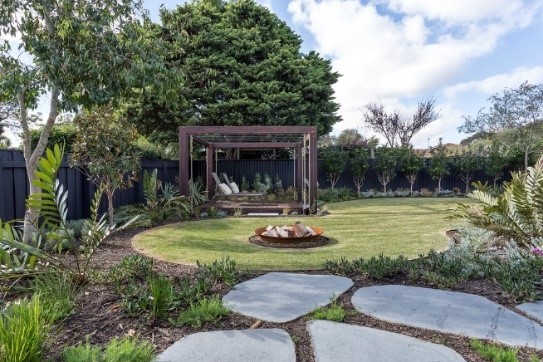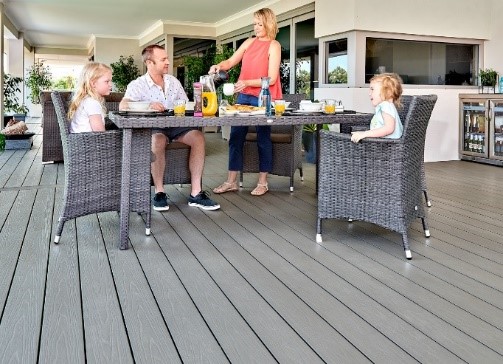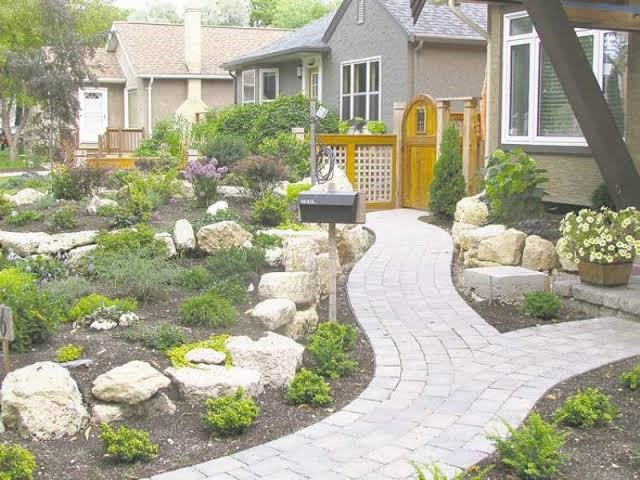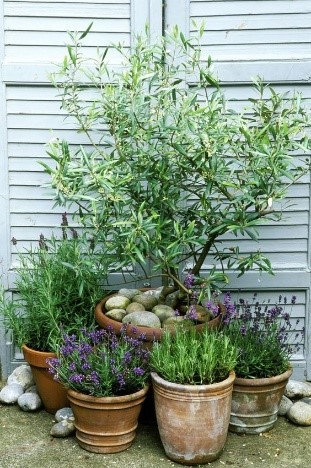News
How to Enjoy a Low-Maintenance Back Yard This Summer
The less garden and lawn area you have, the less time you need to maintain it. This is not to say your backyard has to be bare and boring. Quite the opposite and here are some tips to help you establish your own low to the no-maintenance backyard.
Large patio
A large patio is an investment that will pay off for many years to come, and the larger the patio, the less high-maintenance, water-guzzling lawn and garden is needed to fill that area. You need somewhere to sit and enjoy your outdoor BBQ, and if you have young children, they need hard surfaces for riding and skating. Besides, shaded areas never go to waste in our climate.

Multiple Outdoor Living Spaces
In addition to a main patio or verandah, why not consider multiple deck spaces connected with paths? Mix it up by choosing from traditional pavers, or stamped concrete, or the more natural aesthetics of timber decking. These could also serve different purposes for your entertaining needs: an intimate corner for cosy gatherings, somewhere quiet to enjoy a good book, a larger area for parties, a play area for the kids, or even an outdoor kitchen. Conversation pits are making a comeback and these are also visually appealing and low maintenance.
Paving Stones and Stamped Concrete
Paving stones are a popular patio, path and driveway choice, being practical and low maintenance. Removing weeds is about the only maintenance required unless you opt for stamped concrete, through which weeds can’t grow.

Timber Decking
If considering low to no-maintenance, then you might want to consider a composite timber deck… like NewTechWood. Manufactured from 60% recycled timbers and 40% recycled plastic, this environmentally friendly product is fully capped for protection and requires no maintenance, other than the occasional hose down or sweep as you would any other flooring. You need not sand, reseal, varnish or paint it—ever. And if leaves or tree nuts are a problem, NewTechWood offers a “mini gap” hidden fastening system which narrows the space between boards from the traditional 5.5mm to just 1.5mm. With a 25-year warranty to boot, this is worth investigating.
Artificial Lawn
Synthetic turf is a popular choice for ‘greening’ areas you don’t want to waste water maintaining. In Australia, anything that saves water is a blessing. You also don’t have to mow or fertilize fake grass, and it will remain green in the next drought. (It also doesn’t ‘brown’ where your pets decide to relieve themselves, although more effort is required when they leave other “gifts” behind.) Just be aware that the nature of synthetic lawn means it is also going to be hot in the sun and pets and children won’t be able to play on it as they do on natural grass. There is also the ‘heat island’ effect to consider. Natural grass keeps your house and surrounds cooler—but then you do have to water and mow that.
Mulch and Gravel
You don’t have to have grass, real or fake. Nothing says “no work needed here” quite like mulch, gravels and wood chips. Especially for large areas, or native gardens. These are great options to create low-maintenance garden pathways, too. No watering, no fertilizing, no mowing. Doesn’t get much more maintenance-free than that.

Landscape with a Rock Garden or “Xeriscaping”
Xeriscaping is basically landscaping with drought tolerant plants. Decorative granite rocks interspersed with native plants provides an ultra low maintenance garden that is attractive as it is practical. Native plants and decorative grasses, cacti and succulents are all excellent plant choices. The covering beneath utilizes gravels, mulch or wood chips – also maintenance free.
Ground Covers
In Australia we are lucky to have a wide selection of native ground covers that are hardy and pretty much look after themselves. Useful in larger areas that you don’t use or don’t want to spend time maintaining but could benefit with some greenery. Most Australian native ground covers are accustomed to being watered ‘naturally’ in the winter months, so if you don’t water them for weeks or months yourself, they’ll forgive you.
Choose Low-Maintenance Plants
The best plants are those that are native to your area or plants that are known to be hardy and drought resistant. In addition to the obvious succulents, grass trees and gum trees, you can consider trees and plants like frangipani, wattles, banksia, agapanthus, kangaroo paws, ponytail palms, callistemons, cordylines, grevillea and lavenders. Choose perennials because you only need to buy and plant them once and they come back year after year.
Automatic Reticulation Systems
Even if you can’t afford to reticulate your entire garden, you can save yourself a lot of time and wasted water by reticulating those areas that would be the most time consuming for you to do manually. The beauty of automatic systems is your plants will continue to be watered even when you are away on holidays.

Use Pots and Ornaments
Pots come in so many colours, sizes and designs, that even without plants they can fill a space with decorative colour. Potted plants are easier to move around when you want a change in the garden and can give a dull fence-line a much needed lift. You can also add colour and interest with a variety of colourful garden ornaments, e.g. gnomes, animals, statues, lights – including those with inbuilt solar lights that will light your garden when the sun goes down.
Finally, don’t feel the need to cover every square inch of yard. Too much crowding may mean more work for yourself. Some open spaces are restful to look at as well as to live with.
For more information on our range of composite timber decking options, contact our friendly team today.